What are the standard sizes of wardrobes? Fortunately, I have read this comprehensive list of wardrobe size standards!
When decorating a bedroom, the size of the wardrobe is particularly important. After all, to a certain extent, the size of the bedroom wardrobe not only affects the beauty of the bedroom , but also has a great relationship with the storage space of the bedroom .
Therefore, many custom wardrobe sizes now advocate ergonomics . What is the design size of an ergonomic bedroom wardrobe? How to define the size of a bedroom wardrobe?
( Ergonomics: The way tools are used should be as natural as possible, making them more comfortable and rational for the user.)
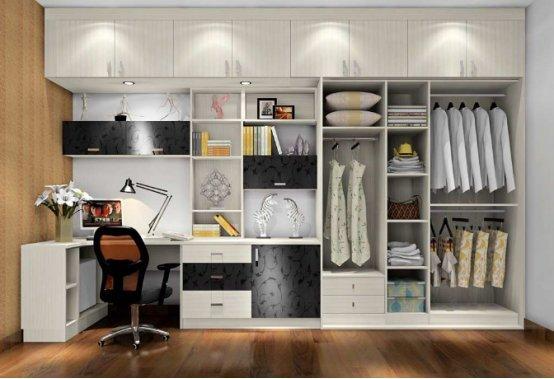
1. Standard size specifications of wardrobe
According to the national standard GB3327-82: the depth of a wardrobe with hinged doors is 550~600mm; the depth of a wardrobe with sliding doors should be greater than or equal to 626mm; the distance from the bottom edge of the clothes hanging rod to the bottom plate is >1350mm for long clothes and >900mm for short clothes; the depth of the stacking area should be greater than 450mm; the upper edge of the top drawer is <1250mm from the ground, and the lower edge of the bottom drawer is >60mm from the ground; drawers are generally 400~500mm deep.
It is said that whether the wardrobe is well decorated or not depends on whether the size is measured accurately . Although the above are standard wardrobe sizes, the appropriate wardrobe size is best determined according to the size of your bedroom!
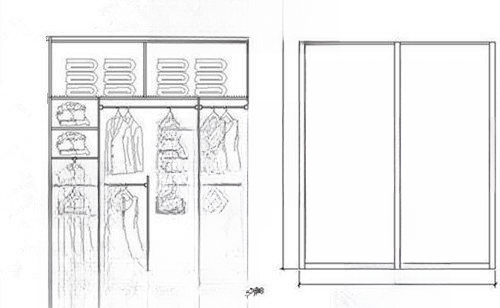
2. Wardrobe Width
Whether it is a custom wardrobe or a ready-made wardrobe, it is generally difficult to choose the width of the wardrobe. Many people don’t know which width of wardrobe is suitable for their home use? Now, Sister FUN will talk to you about the width of the wardrobe .
①1.2m wide wardrobe: Generally speaking, a 1.2m wide wardrobe is an ordinary single wardrobe and a small wardrobe. It is mainly used in small-sized bedrooms, especially in rental houses in Beijing, Shanghai and Guangzhou.
②1.5m wide wardrobe: Compared with a small wardrobe of 1.2 meters wide, a wardrobe of 1.5 meters wide is more practical. It can be used as a combination cabinet and matched with other cabinets of different heights.
③1.8m wide wardrobe: Nowadays, the most common bedroom wardrobes are basically 1.8 meters wide. Before purchasing, you must confirm whether the area of your bedroom is sufficient, and whether there will be any limitations on other usable areas after placing a 1.8-meter wide wardrobe.
④2.2.m wide wardrobe: Most 2.2-meter wide wardrobes are five-door wardrobes. If your bedroom is very large, a 2.2-meter wide wardrobe is a good choice because it has ample storage space and you basically don’t have to worry about the placement of clothes.
Of course, if you feel that the width of these wardrobes cannot meet the needs of your bedroom, then you can choose to customize a tailor-made wardrobe. There is no limit on the size, but the budget will be much higher.
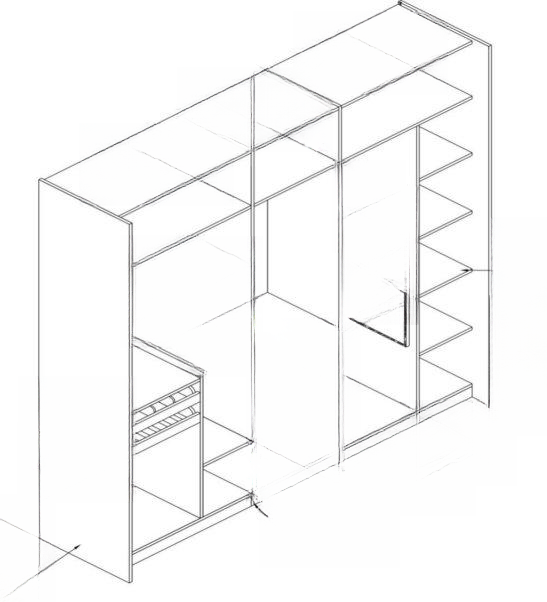
3. Wardrobe Depth
Many consumers know very little about the depth of the wardrobe when customizing it. Little do they know that the depth of the cabinet is also very important and will directly affect daily use.
Since some clothes need to be hung in the closet, if the cabinet is not deep enough, the hanging clothes may be squeezed when the cabinet door is closed or the sleeves may be caught when the cabinet door is closed, causing the clothes to have many wrinkles.
Taking all factors into consideration, the most suitable depth for a wardrobe should be 60cm . If you need to install sliding doors, you can widen it a little to reserve space for installing tracks. This is based on the width of a person's shoulders. After all, the average person's shoulder width is unlikely to exceed 60cm, which can fully demonstrate the humanization of custom wardrobe design.
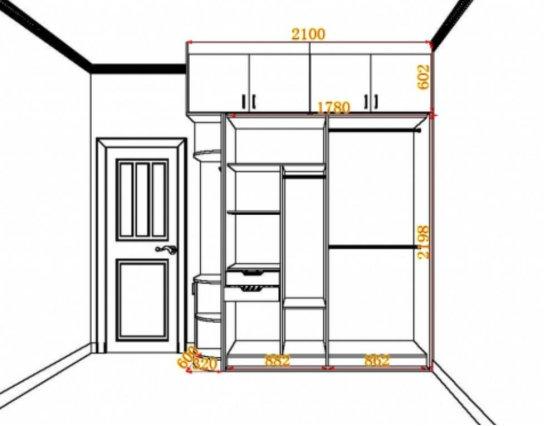
4. Wardrobe height
The standard height of the wardrobe is best chosen according to the height of your own bedroom. Generally speaking, finished wardrobes are mostly 2.2 meters high. It also depends on whether the wardrobe reaches the ceiling. If it is a ceiling-reaching wardrobe, it depends on the height of the room.
The room height of a modern standard home is between 2.7 and 2.8 meters. If you choose a wardrobe that reaches the ceiling, the height of the wardrobe is bound to exceed 2.4 meters. Once the height of the wardrobe exceeds 2.4 meters, it must be divided into two cabinets, the lower cabinet is generally about 2.1 meters high, and the rest are all in the upper cabinet.
If the lower cabinet is too high, the requirements for the door panels will be high, and the wardrobe is likely to deform over time; if it is too low, it will lack aesthetics. In short, in order to make the wardrobe serve us better in the future, the height of the wardrobe needs to be selected according to all aspects of real life.
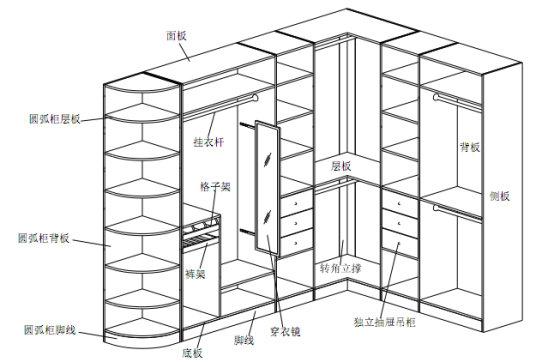
5. Wardrobe door size
A good-looking wardrobe should be matched with a wardrobe door of the right size. So what is the general size of a wardrobe door? Let's listen to Sister FUN's detailed explanation.
① Considering the safety of use, the width of the hinged door wardrobe is generally between 45 and 60 cm , and the thickness of the wardrobe door is best selected between 8 mm and 12 mm. The height is generally between 2 and 2.2 m, which is more stable and durable to use.
② Sliding door wardrobes can save wardrobe space to a certain extent. The width of the wardrobe doors is generally between 60 and 80 cm , but the height of the wardrobe doors should not exceed 2.5 m.
③ Considering the ceiling space and ergonomics, the height of the sliding door is generally balanced at around 2m~2.2m. It is recommended that the sliding door be made 700mm and designed as a four-door wardrobe to increase storage capacity.
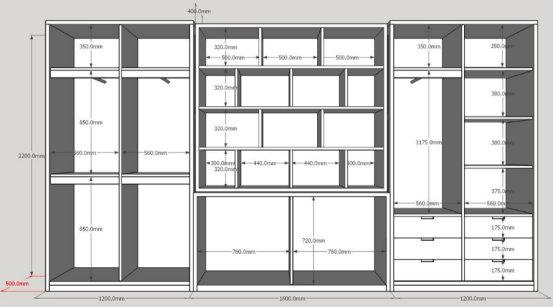
6. Wardrobe internal dimensions
As people's living taste improves, when designing wardrobes, both beauty and practicality are given equal weight. The internal structure of the wardrobe can generally be divided into hanging area, trouser hanging area, stacking area, storage area and drawers , etc. Each storage space has a specific size.
① The hanging area is generally divided into two areas: coats and tops. The area for tops such as short coats and suits needs to be at least 800mm high, and the height of the area for hanging long coats should not be lower than 1300mm.
② If there is a trouser rack in the trouser hanging area, generally 650mm should be reserved; if it is a clothes hanger, at least 700mm should be reserved. The distance between the trouser rack and the clothes hanger and the shelf should be kept between 40~60mm, and the installation height of the clothes hanger should generally be the height of the hostess plus 200mm.
③The stacking area is mainly used to store daily clothes and small items. The width of the cabinet is generally between 330-400mm, the height should not be less than 350mm, and the distance between the shelves is between 400-600mm to facilitate taking clothes.
④ Storage areas are generally used to store infrequently used items, such as quilts, shoes, etc. The height of the quilt storage area should not be less than 400mm, while the height of the shoe storage area should be 250-300mm. As for the height of luggage or backpacks, it can be handled flexibly, but it is best to keep it consistent with the size of other space areas.
⑤ Drawers are generally used to store personal clothing. Their height is usually between 150-200mm and their width is 400-800mm. Drawers should preferably be designed to be no lower than 1.25 meters from the ground for user convenience.
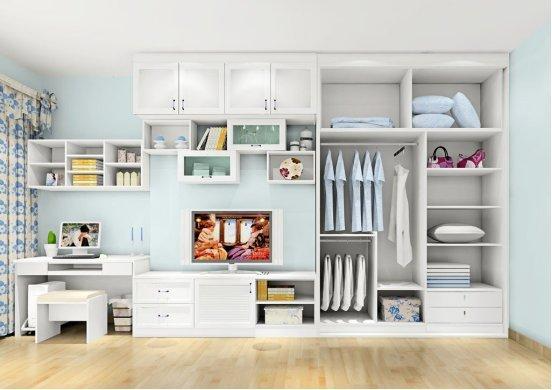
Bedroom wardrobes need to be not only beautiful, but also practical. A beautiful and practical wardrobe is inseparable from a suitable wardrobe size design. I hope that what FUN sister tells you today about wardrobe size can be helpful to you. For more practical content, please continue to pay attention to FUN sister's micro class.